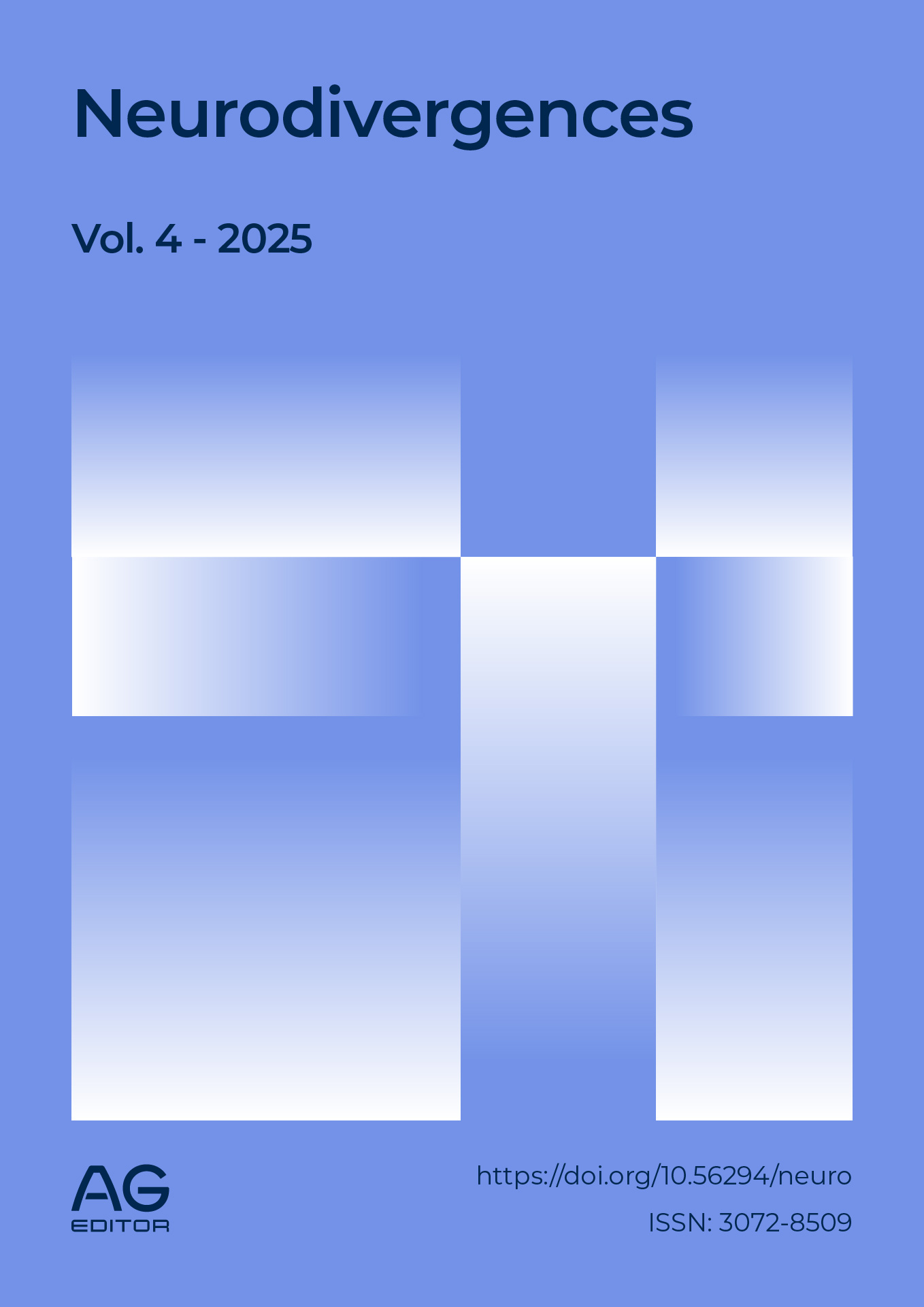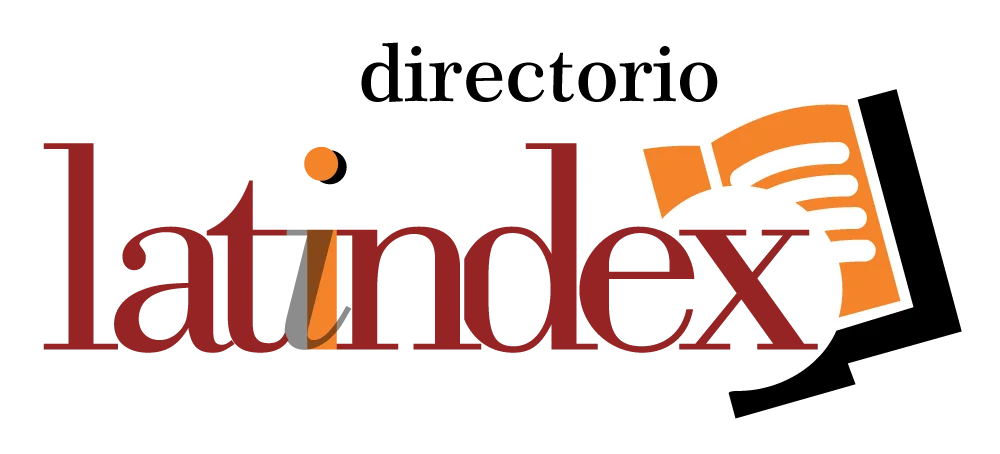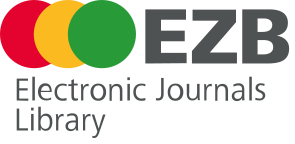Specific Learning Disorders: Neurobiological Foundations, Differential Diagnosis, and Educational Implications
DOI:
https://doi.org/10.56294/neuro2025268Keywords:
Learning disorders, Dyslexia, Dyscalculia, Writing disorders, Executive function, Educational inclusion, NeurodevelopmentAbstract
Introduction: Specific learning disorders (SLD) involve persistent difficulties in reading, writing, and/or mathematics, with a neurobiological basis and not attributable to intellectual, sensory deficits, or inadequate instruction. Their prevalence in school populations ranges from 5–15%, with significant impact on academic performance, self-esteem, and social participation.
Objective: To synthesize evidence on the neurobiological foundations, differential diagnosis, and educational implications of SLD, guiding clinical and pedagogical practice.
Development: Dyslexia shows alterations in left temporo-parietal phonological networks and, in some cases, in the dorsal magnocellular-visual pathway, suggesting a multisystem disorder. Dyscalculia is associated with intraparietal sulcus dysfunction and altered numeric-mnemonic connectivity. Dysgraphia may be linguistic (phonological-orthographic deficit) or motor (dyspraxia/DCD), linked to working memory and executive function impairments. Comorbidities (e.g., ADHD) further complicate cognitive profiles and interventions. Strategies such as the Response to Intervention model support early detection, while Universal Design for Learning and assistive technologies promote educational inclusion. Continuous teacher training and socio-emotional learning programs are essential to mitigate negative effects and foster resilience.
Conclusions: SLD require comprehensive diagnosis, evidence-based interventions, and inclusive adaptations. Combining early screening, targeted support, accessible environments, and teacher training enhances academic and psychosocial outcomes. Further research is needed to optimize identification and intervention protocols, particularly regarding dyscalculia and emerging technologies.
References
1. American Psychiatric Association. Diagnostic and Statistical Manual of Mental Disorders (DSM-5-TR). 5th ed. Washington (DC): American Psychiatric Association; 2022.
2. Fletcher JM, Miciak J. Assessment of specific learning disabilities and intellectual disabilities. Assessment. 2024;31(1):53–74. doi:10.1177/10731911231194992.
3. Pham AV, Riviere A. Specific learning disorders and ADHD: current issues in diagnosis across clinical and educational settings. Curr Psychiatry Rep. 2015;17(6):38. doi:10.1007/s11920-015-0584-y.
4. Scanlon D. Specific learning disability and its newest definition: which is comprehensive? And which is insufficient? J Learn Disabil. 2013;46(1):26–33. doi:10.1177/0022219412464342.
5. Brandenburg J, Huschka SS, Visser L, Hasselhorn M. Are different types of learning disorder associated with distinct cognitive functioning profiles? Front Psychol. 2021;12:725374. doi:10.3389/fpsyg.2021.725374.
6. Barbiero C, Montico M, Lonciari I, et al. The lost children: the underdiagnosis of dyslexia in Italy. PLoS One. 2019;14(1):e0210448. doi:10.1371/journal.pone.0210448.
7. Aldakhil AF. Prevalence of developmental dyslexia among primary school children in Arab countries: a systematic review and meta-analysis. Res Dev Disabil. 2024;152:104812. doi:10.1016/j.ridd.2024.104812.
8. Lin Y, Zhang X, Huang Q, et al. The prevalence of dyslexia in primary school children and their Chinese literacy assessment in Shantou, China. Int J Environ Res Public Health. 2020;17(19):E7140. doi:10.3390/ijerph17197140.
9. Shalev RS, Auerbach J, Manor O, Gross-Tsur V. Developmental dyscalculia: prevalence and prognosis. Eur Child Adolesc Psychiatry. 2000;9(Suppl 2):II58–64. doi:10.1007/s007870070009.
10. Mayes SD, Breaux RP, Calhoun SL, Frye SS. High prevalence of dysgraphia in elementary through high school students with ADHD and autism. J Atten Disord. 2019;23(8):787–96. doi:10.1177/1087054717720721.
11. Hamilton LG, Petty S. Compassionate pedagogy for neurodiversity in higher education: a conceptual analysis. Front Psychol. 2023;14:1093290. doi:10.3389/fpsyg.2023.1093290.
12. Videla R, Aros MB, Parada F, et al. Neurodiversity: post-cognitivist foundations of the 3E approach for educational inclusion of autistic students with technology. Front Hum Neurosci. 2024;18:1493863. doi:10.3389/fnhum.2024.1493863.
13. Hobson HM, Toseeb U, Gibson JL. Developmental language disorder and neurodiversity: surfacing contradictions, tensions and unanswered questions. Int J Lang Commun Disord. 2024;59(4):1505–16. doi:10.1111/1460-6984.13009.
14. Chapman R, Botha M. Neurodivergence-informed therapy. Dev Med Child Neurol. 2023;65(3):310–7. doi:10.1111/dmcn.15384.
15. Pigato G. Contributing to an inclusive education for neurodivergent students: sharing reflections, practices, and experiences. FEMS Microbiol Lett. 2024;371:fnae046. doi:10.1093/femsle/fnae046.
16. Parada FJ, Grasso-Cladera A, Rossi A, et al. Applied human neuroscience: fostering and designing inclusive environments with the 3E-cognition perspective. Eur J Neurosci. 2024;60(3):4148–4168. doi:10.1111/ejn.16463.
17. Liu T, Thiebaut de Schotten M, Altarelli I, Ramus F, Zhao J. Neural dissociation of visual attention span and phonological deficits in developmental dyslexia: a hub-based white matter network analysis. Hum Brain Mapp. 2022;43(17):5210–29. doi:10.1002/hbm.25997.
18. Yan X, Perkins K, Cao F. A hierarchical deficit model of reading disability: evidence from dynamic causal modelling analysis. Neuropsychologia. 2021;154:107777. doi:10.1016/j.neuropsychologia.2021.107777.
19. Stein J. The visual basis of reading and reading difficulties. Front Neurosci. 2022;16:1004027. doi:10.3389/fnins.2022.1004027.
20. Gori S, Cecchini P, Bigoni A, Molteni M, Facoetti A. Magnocellular–dorsal pathway and sub-lexical route in developmental dyslexia. Front Hum Neurosci. 2014;8:460. doi:10.3389/fnhum.2014.00460.
21. Gori S, Seitz AR, Ronconi L, Franceschini S, Facoetti A. Multiple causal links between magnocellular–dorsal pathway deficit and developmental dyslexia. Cereb Cortex. 2016;26(11):4356–69. doi:10.1093/cercor/bhv206.
22. Stein J. The current status of the magnocellular theory of developmental dyslexia. Neuropsychologia. 2019;130:66–77. doi:10.1016/j.neuropsychologia.2018.03.022.
23. Vidyasagar TR, Pammer K. Dyslexia: a deficit in visuo-spatial attention, not in phonological processing. Trends Cogn Sci. 2010;14(2):57–63. doi:10.1016/j.tics.2009.12.003.
24. Vidyasagar TR. Reading into neuronal oscillations in the visual system: implications for developmental dyslexia. Front Hum Neurosci. 2013;7:811. doi:10.3389/fnhum.2013.00811.
25. Habib M. The neurological basis of developmental dyslexia: an overview and working hypothesis. Brain. 2000;123(Pt 12):2373–99. doi:10.1093/brain/123.12.2373.
26. Tablante J, Krossa L, Azimi T, Chen L. Dysfunctions associated with the intraparietal sulcus and a distributed network in individuals with math learning difficulties: an ALE meta-analysis. Hum Brain Mapp. 2023;44(7):2726–40. doi:10.1002/hbm.26240.
27. Schwizer-Ashkenazi S, Roell M, McCaskey U, et al. Are numerical abilities determined at early age? A brain morphology study in children and adolescents with and without developmental dyscalculia. Dev Cogn Neurosci. 2024;67:101369. doi:10.1016/j.dcn.2024.101369.
28. Schwizer-Ashkenazi S, McCaskey U, O’Gorman Tuura R, Kucian K. Altered effective connectivity of the numerical brain in children with developmental dyscalculia. J Neurosci Res. 2025;103(7):e70066. doi:10.1002/jnr.70066.
29. Michels L, Buechler R, Kucian K. Increased structural covariance in brain regions for number processing and memory in children with developmental dyscalculia. J Neurosci Res. 2022;100(2):522–36. doi:10.1002/jnr.24998.
30. McCaskey U, von Aster M, O’Gorman R, Kucian K. Persistent differences in brain structure in developmental dyscalculia: a longitudinal morphometry study. Front Hum Neurosci. 2020;14:272. doi:10.3389/fnhum.2020.00272.
31. Schel MA, Klingberg T. Specialization of the right intraparietal sulcus for processing mathematics during development. Cereb Cortex. 2017;27(9):4436–44. doi:10.1093/cercor/bhw246.
32. Duricy E, Durisko C, Fiez JA. The role of the intraparietal sulcus in numeracy: a review of parietal lesion cases. Behav Brain Res. 2025;482:115453. doi:10.1016/j.bbr.2025.115453.
33. Rosenblum S. Inter-relationships between objective handwriting features and executive control among children with developmental dysgraphia. PLoS One. 2018;13(4):e0196098. doi:10.1371/journal.pone.0196098.
34. Ruffini C, Osmani F, Martini C, Giera WK, Pecini C. The relationship between executive functions and writing in children: a systematic review. Child Neuropsychol. 2024;30(1):105–63. doi:10.1080/09297049.2023.2170998.
35. Soto EF, Irwin LN, Chan ESM, Spiegel JA, Kofler MJ. Executive functions and writing skills in children with and without ADHD. Neuropsychology. 2021;35(8):792–808. doi:10.1037/neu0000769.
36. Rapp B, Purcell J, Hillis AE, Capasso R, Miceli G. Neural bases of orthographic long-term memory and working memory in dysgraphia. Brain. 2016;139(Pt 2):588–604. doi:10.1093/brain/awv348.
37. Alhaddad G, Danna J, Dione M, Longcamp M. The influence of fine motor skills and executive functions on automatized handwriting. Cogn Neuropsychol. 2025;:1–13. doi:10.1080/02643294.2025.2518179.
38. Leonard HC, Bernardi M, Hill EL, Henry LA. Executive functioning, motor difficulties, and developmental coordination disorder. Dev Neuropsychol. 2015;40(4):201–15. doi:10.1080/87565641.2014.997933.
39. van der Fels IMJ, Smith J, de Bruijn AGM, et al. Relations between gross motor skills and executive functions, controlling for information processing and lapses of attention in 8–10 year old children. PLoS One. 2019;14(10):e0224219. doi:10.1371/journal.pone.0224219.
40. Mingozzi A, Tobia V, Marzocchi GM. Dyslexia and dyscalculia: which neuropsychological processes distinguish the two developmental disorders? Child Neuropsychol. 2024;30(1):1–21. doi:10.1080/09297049.2023.2170997.
41. Landerl K, Fussenegger B, Moll K, Willburger E. Dyslexia and dyscalculia: two learning disorders with different cognitive profiles. J Exp Child Psychol. 2009;103(3):309–24. doi:10.1016/j.jecp.2009.03.006.
42. Peters L, Op de Beeck H, De Smedt B. Cognitive correlates of dyslexia, dyscalculia and comorbid dyslexia/dyscalculia: effects of numerical magnitude processing and phonological processing. Res Dev Disabil. 2020;107:103806. doi:10.1016/j.ridd.2020.103806.
43. Luoni C, Scorza M, Stefanelli S, Fagiolini B, Termine C. A neuropsychological profile of developmental dyscalculia: the role of comorbidity. J Learn Disabil. 2023;56(4):310–23. doi:10.1177/00222194221102925.
44. Poon K, Ho MSH, Wang LC. Examining distinctive working memory profiles in Chinese children with predominantly inattentive subtype of attention-deficit/hyperactivity disorder and/or reading difficulties. Front Psychol. 2021;12:718112. doi:10.3389/fpsyg.2021.718112.
45. Zhang Z, Xue Y, Bai M, et al. Reading abilities and cognitive processing in Grade 3 children with ADHD comorbid with developmental dyslexia. J Psychiatr Res. 2025;189:521–27. doi:10.1016/j.jpsychires.2025.07.005.
46. Parke EM, Thaler NS, Etcoff LM, Allen DN. Intellectual profiles in children with ADHD and comorbid learning and motor disorders. J Atten Disord. 2020;24(9):1227–36. doi:10.1177/1087054715576343.
47. Crisci G, Caviola S, Cardillo R, Mammarella IC. Executive functions in neurodevelopmental disorders: comorbidity overlaps between attention deficit and hyperactivity disorder and specific learning disorders. Front Hum Neurosci. 2021;15:594234. doi:10.3389/fnhum.2021.594234.
48. Gosse C, Dricot L, Van Reybroeck M. Evidence of graphomotor dysfunction in children with dyslexia: a combined behavioural and fMRI experiment. Cortex. 2022;148:68–88. doi:10.1016/j.cortex.2021.11.021.
49. Döhla D, Willmes K, Heim S. Cognitive profiles of developmental dysgraphia. Front Psychol. 2018;9:2006. doi:10.3389/fpsyg.2018.02006.
50. Berninger VW, Richards T, Abbott RD. Differential diagnosis of dysgraphia, dyslexia, and OWL LD: behavioral and neuroimaging evidence. Read Writ. 2015;28(8):1119–53. doi:10.1007/s11145-015-9565-0.
51. Waber DP, Boiselle EC, Yakut AD, et al. Developmental dyspraxia in children with learning disorders: four-year experience in a referred sample. J Child Neurol. 2021;36(3):210–21. doi:10.1177/0883073820966913.
52. Jolly C, Jover M, Danna J. Dysgraphia differs between children with developmental coordination disorder and/or reading disorder. J Learn Disabil. 2024;57(6):397–410. doi:10.1177/00222194231223528.
53. Chang SH, Yu NY. Handwriting movement analyses comparing first and second graders with normal or dysgraphic characteristics. Res Dev Disabil. 2013;34(9):2433–41. doi:10.1016/j.ridd.2013.02.028.
54. Andrade OV, Andrade PE, Capellini SA. Collective screening tools for early identification of dyslexia. Front Psychol. 2014;5:1581. doi:10.3389/fpsyg.2014.01581.
55. Catts HW, Nielsen DC, Bridges MS, Liu YS, Bontempo DE. Early identification of reading disabilities within an RTI framework. J Learn Disabil. 2015;48(3):281–97. doi:10.1177/0022219413498115.
56. Tran L, Sanchez T, Arellano B, Lee Swanson H. A meta-analysis of the RTI literature for children at risk for reading disabilities. J Learn Disabil. 2011;44(3):283–95. doi:10.1177/0022219410378447.
57. Miciak J, Fletcher JM. The critical role of instructional response for identifying dyslexia and other learning disabilities. J Learn Disabil. 2020;53(5):343–53. doi:10.1177/0022219420906801.
58. Lonigan CJ, Phillips BM. Response to instruction in preschool: results of two randomized studies with children at significant risk of reading difficulties. J Educ Psychol. 2016;108(1):114–29. doi:10.1037/edu0000054.
59. Al Otaiba S, Connor CM, Folsom JS, et al. To wait in Tier 1 or intervene immediately: a randomized experiment examining first grade response to intervention (RTI) in reading. Except Child. 2014;81(1):11–27. doi:10.1177/0014402914532234.
60. Gilmour AF, Harper J, Lloyd B, Van Camp A. Response to intervention and specific learning disability identification: evidence from Tennessee. J Learn Disabil. 2024;57(3):168–80. doi:10.1177/00222194231215013.
61. Colenbrander D, Ricketts J, Breadmore HL. Early identification of dyslexia: understanding the issues. Lang Speech Hear Serv Sch. 2018;49(4):817–28. doi:10.1044/2018_LSHSS-DYSLC-18-0007.
62. Tanimoto S, Thompson R, Berninger VW, Nagy W, Abbott RD. Computerized writing and reading instruction for students in grades 4 to 9 with specific learning disabilities affecting written language. J Comput Assist Learn. 2015;31(6):671–89. doi:10.1111/jcal.12110.
63. Berninger VW, Nagy W, Tanimoto S, Thompson R, Abbott RD. Computer instruction in handwriting, spelling, and composing for students with specific learning disabilities in grades 4 to 9. Comput Educ. 2015;81:154–68. doi:10.1016/j.compedu.2014.10.005.
64. Forber-Pratt A, Hanson S, Bruyere S, et al. Assessment of and intervention with persons with disabilities. Washington (DC): American Psychological Association; 2022.
65. MacArthur CA. Using technology to enhance the writing processes of students with learning disabilities. J Learn Disabil. 1996;29(4):344–54. doi:10.1177/002221949602900403.
66. Asselborn T, Chapatte M, Dillenbourg P. Extending the spectrum of dysgraphia: a data-driven strategy to estimate handwriting quality. Sci Rep. 2020;10(1):3140. doi:10.1038/s41598-020-60011-8.
67. Desch LW, Hobart-Porter LJ, Houtrow A. Prescribing assistive technology: focus on children with complex communication needs: clinical report. Pediatrics. 2025;156(1):e2025072216. doi:10.1542/peds.2025-072216.
68. Zysberg L, Kasler J. Learning disabilities and emotional intelligence. J Psychol. 2017;151(5):464–76. doi:10.1080/00223980.2017.1314929.
69. Alesi M, Rappo G, Pepi A. Self-esteem at school and self-handicapping in childhood: comparison of groups with learning disabilities. Psychol Rep. 2012;111(3):952–62. doi:10.2466/15.10.PR0.111.6.952-962.
70. Touloupis T. Facebook use and cyberbullying by students with learning disabilities: the role of self-esteem and loneliness. Psychol Rep. 2024;127(3):1237–70. doi:10.1177/00332941221138471.
71. Resurrección DM, Jiménez Ó, Menor E, Ruiz-Aranda D. The Learning to Be project: an intervention for Spanish students in primary education. Front Psychol. 2021;12:632617. doi:10.3389/fpsyg.2021.632617.
72. Shany M, Wiener J, Assido M. Friendship predictors of global self-worth and domain-specific self-concepts in university students with and without learning disability. J Learn Disabil. 2013;46(5):444–52. doi:10.1177/0022219412436977.
73. Heiman T, Olenik-Shemesh D. Social-emotional profile of children with and without learning disabilities: the relationships with perceived loneliness, self-efficacy and well-being. Int J Environ Res Public Health. 2020;17(20):7358. doi:10.3390/ijerph17207358.
74. Pannebakker FD, van Genugten L, Diekstra RFW, et al. A social gradient in the effects of the Skills for Life program on self-efficacy and mental well-being of adolescent students. J Sch Health. 2019;89(7):587–95. doi:10.1111/josh.12779.
75. Wood SG, Moxley JH, Tighe EL, Wagner RK. Does use of text-to-speech and related read-aloud tools improve reading comprehension for students with reading disabilities? A meta-analysis. J Learn Disabil. 2018;51(1):73–84. doi:10.1177/0022219416688170.
76. Hurwitz LB, Vanacore KP. Educational technology in support of elementary students with reading or language-based disabilities: a cluster randomized control trial. J Learn Disabil. 2023;56(6):453–66. doi:10.1177/00222194221141093.
77. Fathi Azar E, Mirzaie H, Oftadeh Balani S, Hejazi-Shirmard M. Effects of transcranial electrical stimulation on academic and cognitive skills in individuals with specific learning disabilities: a systematic review. Neuroscience. 2025;576:241–52. doi:10.1016/j.neuroscience.2025.04.045.
78. Fathi Azar E, Hejazi-Shirmard M, Mirzaie H. Cognitive enhancement through technology: a review of transcranial electrical stimulation (TES) interventions in children and adolescents with specific learning disabilities. Child Care Health Dev. 2024;50(5):e13318. doi:10.1111/cch.13318.
79. Bryant BR, Kim MK, Ok MW, et al. A comparison of the effects of reading interventions on engagement and performance for fourth-grade students with learning disabilities. Behav Modif. 2015;39(1):167–90. doi:10.1177/0145445514561316.
80. Butterworth B, Kovas Y. Understanding neurocognitive developmental disorders can improve education for all. Science. 2013;340(6130):300–5. doi:10.1126/science.1231022.
81. Stone LA, Benoit L, Martin A, Hafler J. Barriers to identifying learning disabilities: a qualitative study of clinicians and educators. Acad Pediatr. 2023;23(6):1166–74. doi:10.1016/j.acap.2022.12.008.
82. American Academy of Ophthalmology. Joint statement: learning disabilities, dyslexia, and vision — reaffirmed 2014.
83. Shanahan E, Choi S, An J, et al. Ongoing teacher support for data-based individualization: a meta-analysis and synthesis. J Learn Disabil. 2025;58(1):3–18. doi:10.1177/00222194241271335.
84. Schmitterer AMA, Brod G. Which data do elementary school teachers use to determine reading difficulties in their students? J Learn Disabil. 2021;54(5):349–64. doi:10.1177/0022219420981990.
85. Hoth J, Larrain M, Kaiser G. Identifying and dealing with student errors in the mathematics classroom: cognitive and motivational requirements. Front Psychol. 2022;13:1057730. doi:10.3389/fpsyg.2022.1057730.
Published
Issue
Section
License
Copyright (c) 2025 Lucía Germán Flores (Author)

This work is licensed under a Creative Commons Attribution 4.0 International License.
The article is distributed under the Creative Commons Attribution 4.0 License. Unless otherwise stated, associated published material is distributed under the same licence.






